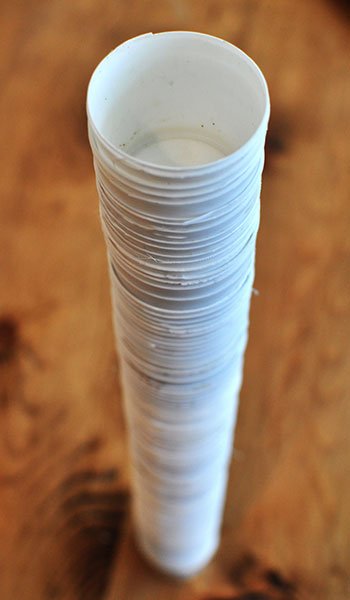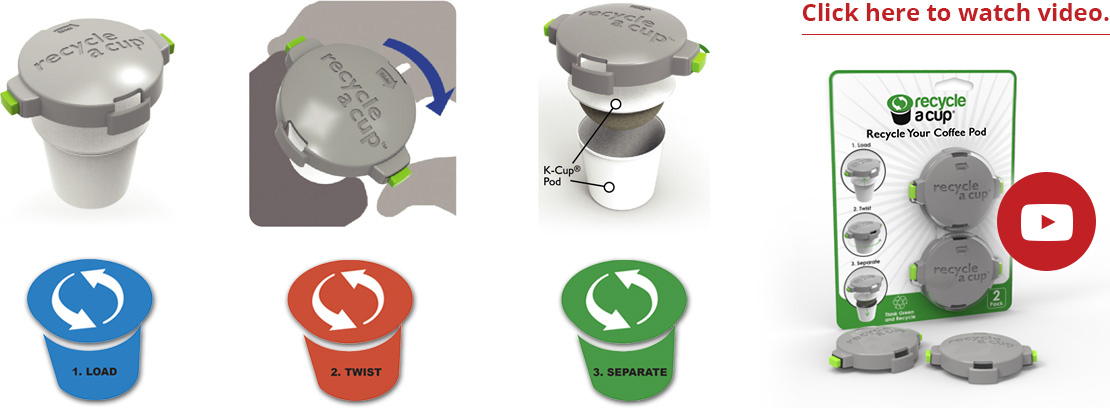How It Works
Not all pods are exactly the same. The Recycle A Cup® cutter works with the majority of coffee pod designs such as K-Cup® and similar brands. However, the cutter may not work with all brands due to small differences in pod sizes, materials and thicknesses. Please use the Recycle A Cup® cutter to get a feel for how it works with your favorite pod brand.
Step 1: Load
- Wait for your used coffee pod to cool.
- Load the pod into the cutter.
Step 2: Twist
- Press both green buttons.
- Keep buttons pressed and twist once completely around the pod.
Step 3: Separate
- Release both buttons.
- Remove upper part of the pod from the plastic.
Re-Purpose or Recycle & Compost
- Recycle or reuse the plastic pod.
- Recycle the aluminum top.
- Compost the paper and coffee grinds.
Even if you throw out the pod top with the filter still attached, the filter and coffee grinds can now decompose vs. being trapped in the plastic and you are still making a nice environmental contribution.
Why Recycle Your Keurig® K-Cup®pods?
While coffee pods are a convenient way to make your morning cup of joe, they also result in a significant amount of waste. Unfortunately, when these pods end up in landfills, they can remain there for decades or longer. Therefore, it’s important to consider your environmental impact each time you brew up another single-serve coffee pod.
Recycling is an environmentally responsible way to dispose of this unavoidable waste, and there’s little reason not to recycle your Keurig® K-Cup® pods. Luckily, with the Recycle A Cup® cutter, a specialized coffee pod separating tool, you can easily break down K-Cups® pods so they can be disposed of properly.
Are There Compostable K-Cups® pods?
When left whole, K-Cups® pods are not biodegradable, as their plastic and aluminum elements will not break down naturally, and the organic material is sealed inside. However, by separating the coffee pod, you can compost its leftover coffee grounds and paper filter.
Microorganisms will quickly break down the grounds and paper, creating humus, the organic component of soil. Humus that’s generated from composting coffee grounds is rich in nitrogen, which is beneficial for a variety of plants. Some gardeners will even make special trips to coffee shops to pick up leftover grounds for fertilization purposes.
What Does Recycling Keurig® K-Cup® pods Involve?
Once you’ve composted the leftover coffee grounds and the paper filter, the rest of the coffee pod must be recycled. Luckily, Keurig® K-Cup® pods recycling is almost as simple as throwing your used grounds in the compost pile!
After you’ve separated the foil cover and plastic cup using your Recycle A Cup® cutter, they can be placed in your recycling bin. However, you should check in with your local recycling plant beforehand to ensure they can process #5 and #7 plastic, which coffee pods are typically made from. In some cases, you may have to send your pods to a regional facility for processing.




